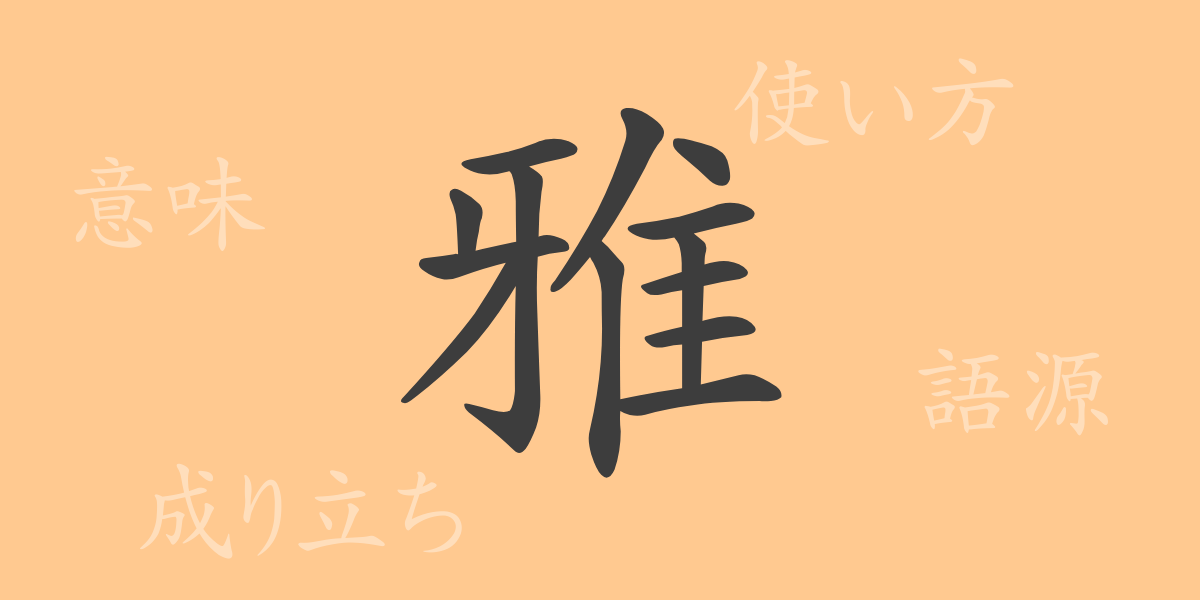Japanese culture is known worldwide for its delicacy and sophistication. A kanji that symbolizes such culture is “雅(Miya-bi).” This single character encapsulates the aesthetic sense and values of the Japanese people. In this article, we will delve into the allure of “雅(Miya-bi),” exploring its origins, meaning, usage, and even phrases and idioms that include it.
The Origin (Etymology) of 雅(Miya-bi)
The kanji “雅(Miya-bi)” originated in ancient China. It evolved from the character “牙(Kiba),” which originally meant “fang,” and came to represent refined and sophisticated beauty. In Japan, throughout the Heian period, this character was used in the aristocratic society to represent a high sense of beauty.
The Meaning and Usage of 雅(Miya-bi)
“雅(Miya-bi)” is read as “miya-bi” and is used to express refined and sophisticated beauty. It is often used in contexts related to culture and the arts, and phrases like “雅な趣(Miyabi -na- omomuki)” are used to denote a refined taste or atmosphere.
How to Read 雅(Miya-bi), Stroke Count, and Radical
Basic information about the kanji “雅(Miya-bi)” is as follows:
- Reading: The on’yomi (Chinese reading) is “が(Ga),” and the kun’yomi (Japanese reading) is “みやび(Miya-bi).”
- Stroke Count: “雅(Miya-bi)” is a 13-stroke kanji.
- Radical: The radical is “牙(Kiba),” which is also known as “きばへん(Kiba-hen).”
Phrases, Idioms, and Proverbs Using 雅(Miya-bi) and Their Meanings
Phrases and idioms that include “雅(Miya-bi)” are frequently used in Japanese to express elegance and sophistication. For example, “雅楽(Gagaku)” refers to traditional music performed at the imperial court, “雅詩(Gashi)” to refined poetry, and “雅俗折衷(Gazokusecchuu)” to a blend of the elegant and the vulgar. These terms are useful in demonstrating a deep understanding of Japanese culture and arts.
Summary on 雅(Miya-bi)
The kanji “雅(Miya-bi)” is ideally suited to represent Japan’s traditional aesthetic sense. This single character is imbued with the delicate and refined culture of Japan, and understanding it allows for a deeper insight into Japanese arts and culture. No matter how times change, the beauty held by “雅(Miya-bi)” remains constant, continuing to reflect the hearts of the Japanese people.

























